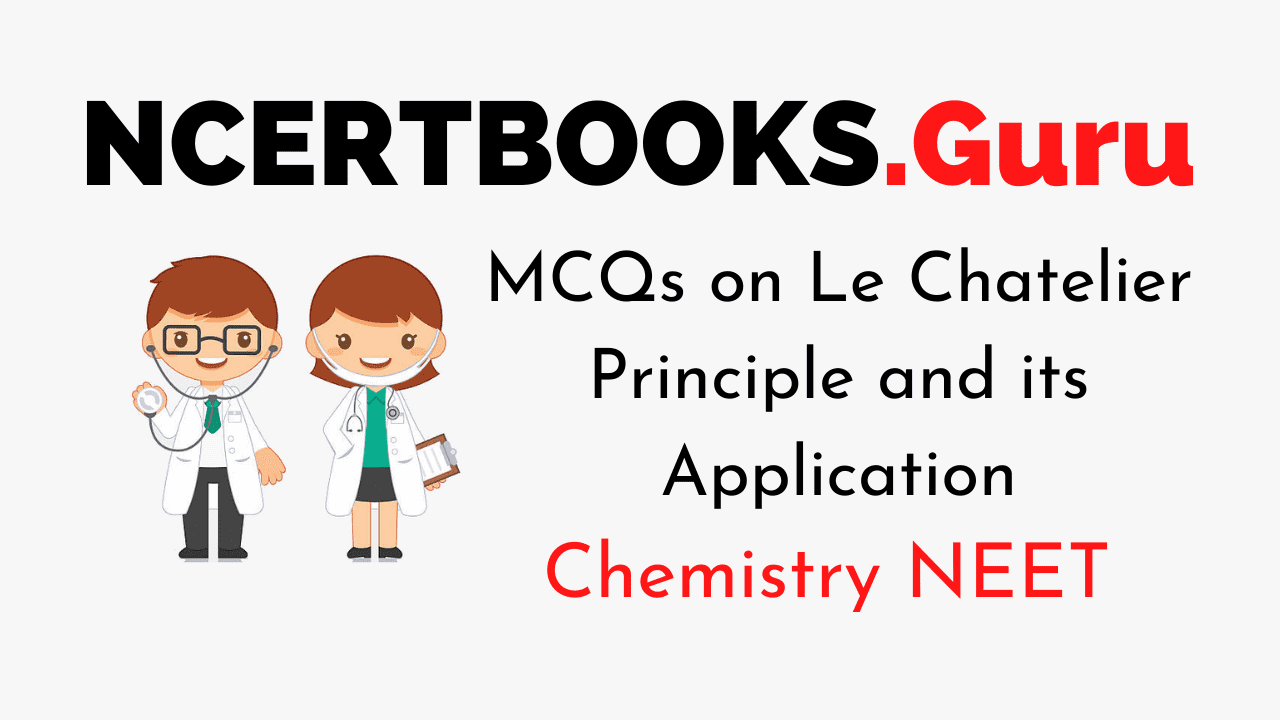NEET Chemistry is the scoring paper in the medical entrance examination. Here, you will discover the NEET Chemistry MCQ Questions for all Concepts as per the latest syllabus. Practice more on a regular basis with these NEET Chemistry objective questions on air pollution and improve your subject knowledge & problem-solving skills along with time management. NEET Chemistry Le Chatelier Principle and its Application Multiple Choice Questions make you feel confident in answering the question in the exam & increases your scores to high.
MCQs on Le Chatelier Principle and its Application
1. In what manner will increase of pressure affect the following equation
C(s) + H2O → CO(g) + H2(g)
(a) shift in the reverse direction
(b) shift in the forward direction
(c) increase in the yield of hydrogen
(d) no effect
Answer
Answer: (a)
2. The equilibrium between water and its vapour in an open vessel
(a) can be achieved
(b) depends upon pressure
(c) cannot be achieved
(d) depends upon temperature
Answer
Answer: (c)
3. When a catalyst is added to a reversible reaction in equilibrium state the value of the equilibrium constant
(a) increases
(b) decreases
(c) does not change
(d) becomes zero
Answer
Answer: (c)
4. A vessel at equilibrium contains SO3, SO2 and O2, now some helium gas is added so that total pressure increases while temperature and volume remain constant. According to Le Chatelier Principle the dissociation of SO32-
(a) decreases
(b) remain constant
(c) increases
(d) change unpredictably
Answer
Answer: (b)
5. The chemical equilibrium of a reversible reaction is not influenced by
(a) temperature
(b) pressure
(c) catalyst
(d) concentration
Answer
Answer: (c)
6. Le Chatelier Principle is applicable to
(a) heterogeneous reaction
(b) homogeneous reaction
(c) irreversible reaction
(d) system in equilibrium
Answer
Answer: (d)
7. The equilibrium constant of a reaction is 300. If the volume of reaction flask is tripled the equilibrium constant is
(a) 300
(b) 600
(c) 900
(d) 100
Answer
Answer: (a)
8. For a reversible reaction the concentration of the reactants are doubled, then the equilibrium constant
(a) becomes one-fourth
(b) is doubled
(c) is halved
(d) remains the same
Answer
Answer: (d)
9. The role of a catalyst in a reversible reaction is to
(a) alter the equilibrium constant of the reaction
(b) increase the rate of the forward reaction
(c) allow the equilibrium to be achieved quickly
(d) decrease the rate of backward reaction
Answer
Answer: (c)
10. In which of the following cases does the reaction go farthest to completion?
(a) K = 1
(b) K = 10
(c) K = 10-2
(d) K = 10²
Answer
Answer: (d)
